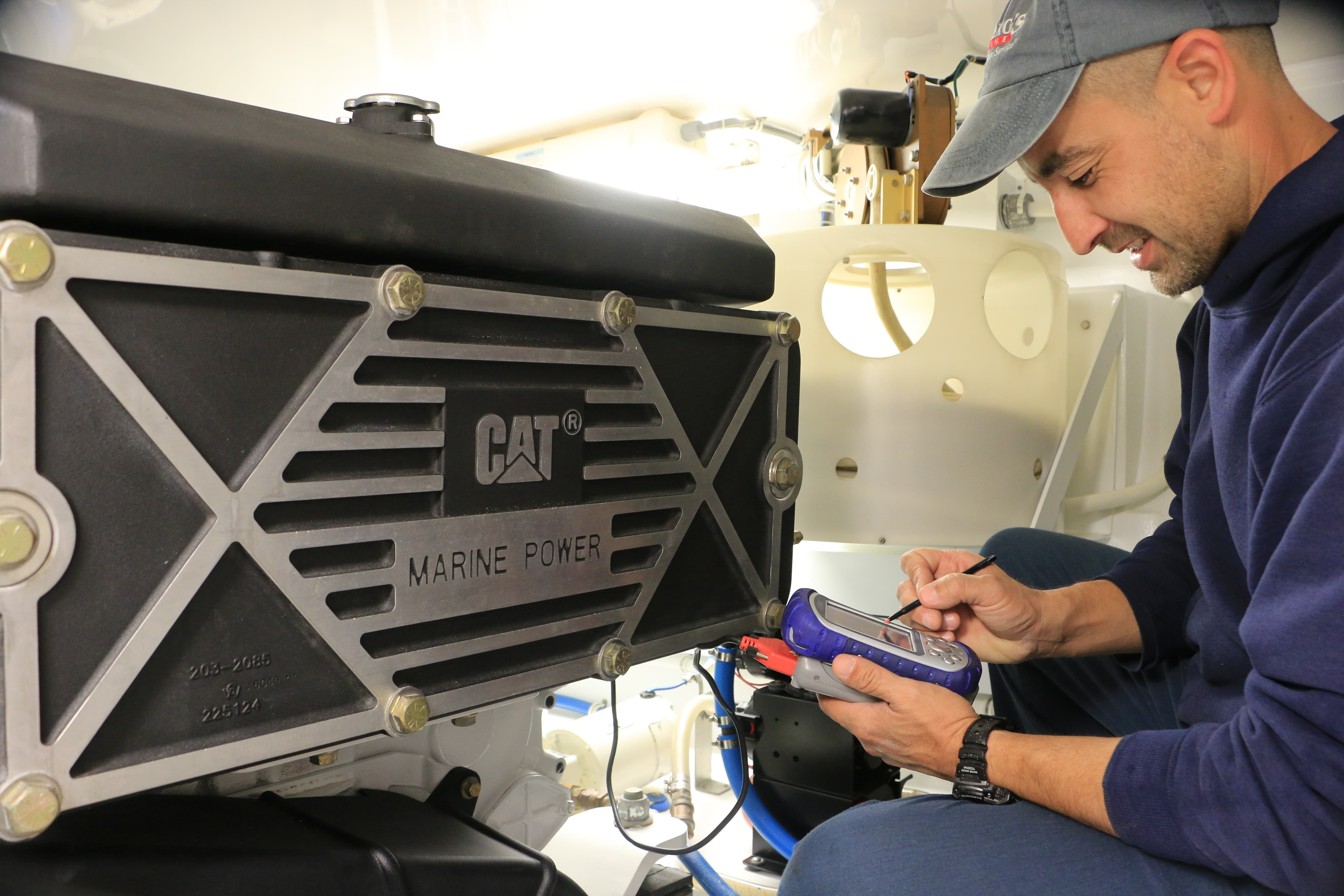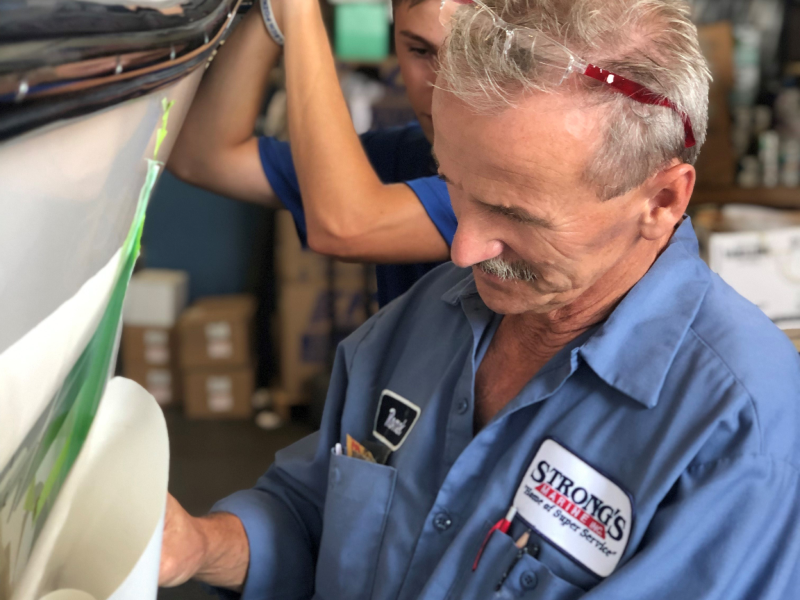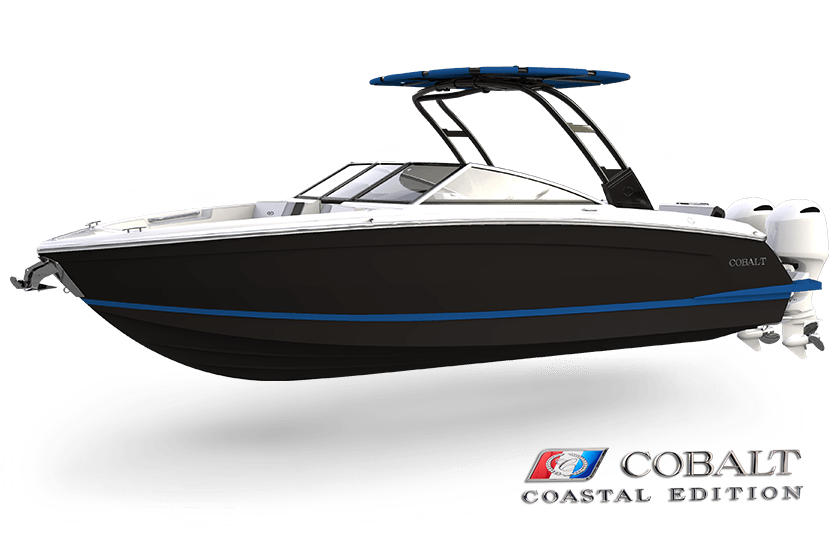How Do I Keep My Boat From Deteriorating in Saltwater?
.png)
The Struggle of Owning a Boat in Saltwater
How do I protect my boat in saltwater?
If you own a boat and spend most of your time cruising the saltwater of Long Island, you’ve probably had that sinking feeling (no pun intended) when you see rust creeping up on your stainless steel, corrosion on your outboard, or faded gelcoat that once shined like glass. Saltwater is relentless—it doesn’t care how much you love your boat. If you don’t stay on top of maintenance, it will wear your boat down faster than you’d ever expect.
At Strong’s Marine, we understand the battle against saltwater. We’ve been helping boaters navigate these challenges since 1945, with 12 locations across Long Island and decades of expertise in keeping boats looking and running like new. Whether you just bought your first boat or have been on the water for years, this guide will teach you how to protect your investment and keep your boat in top shape for years to come.
By the end of this article, you’ll know:
- Why saltwater is so damaging to boats
- The best ways to prevent corrosion, rust, and wear
- How to properly maintain your boat’s hull, engine, and electrical system
- Long-term care strategies to extend the life of your boat

Why Saltwater is Tough on Boats
The Corrosive Nature of Saltwater
Saltwater is a silent destroyer. Unlike freshwater, it speeds up oxidation, meaning metal parts rust and corrode much faster. If you’ve ever left a metal tool outside near the ocean, you’ve seen how quickly it turns orange with rust. Now, imagine what’s happening to your boat’s engine, wiring, and stainless steel every time you take it out.
How Salt Affects Different Boat Materials
Salt doesn’t discriminate—it goes after everything:
- Metal parts (stainless steel, aluminum, and bronze) corrode quickly without proper care.
- Fiberglass hulls become dull, chalky, and brittle if not protected.
- Upholstery and canvas wear out faster when exposed to salty, humid air.
- Electrical systems short out if salt creeps in and causes corrosion.
Essential Maintenance to Prevent Saltwater Damage
Rinsing and Washing: Your First Line of Defense
The single most important thing you can do? Rinse your boat thoroughly after every trip. A simple freshwater wash removes salt deposits before they can do damage.
- Use fresh water and a hose (preferably with a nozzle that provides good pressure).
- Don’t forget the hidden spots—under the hull, inside compartments, and around metal hardware.
- Wash with a salt-specific boat soap to neutralize any lingering salt.
.png?width=714&height=496&name=Screenshot%202023-08-31%20at%203.25.07%20PM%20(2).png)
Choosing the Right Cleaning Products for Saltwater Boats
Not all soaps are created equal. Look for marine-grade cleaners designed for saltwater use. Regular household soap might not break down salt effectively, leaving residue behind that can still cause damage.
Cleaning Your Boat with Strong's Marine's Quick Launch Dockage service
Want a service that makes owning and using your boat just as seamless? Our Quick Launch Dockage premium service has you and your boat covered—giving you priority access, convenience, and peace of mind every time you’re ready to get out on the water.
- Canvas removed, stored and put back on upon your return
- Engines are warmed up – no dead batteries!
- Fresh water flush of engines
- Boat cleaned from the rub-rail down with soap & water after every haul.
Protecting Your Boat’s Hull from Saltwater Corrosion
Anti-Fouling Paint: Why It’s Necessary
Ever noticed the green and brown growth on boats left in the water too long? That’s marine life attaching to the hull. Anti-fouling paint keeps barnacles, algae, and other critters from turning your boat into their home.
- Choose the right paint based on your boat type (aluminum, fiberglass, or wood).
Gelcoat Maintenance and Protection
Gelcoat is the protective layer over your boat’s fiberglass, but salt and sun wear it down over time. To keep it looking fresh:
- Wax your boat at least twice a season to create a protective barrier.
- Use a UV-resistant polish to prevent fading.
- Avoid harsh scrubbing, which can break down the gelcoat.

Engine and Mechanical Care in Saltwater
Flushing Your Engine After Every Trip
Your engine’s cooling system pulls in saltwater, and if you don’t flush it out, salt will crystallize inside—leading to blockages and overheating.
- For outboards, use flush muffs or a built-in flushing port.
- For inboards, flush with fresh water using a designated flushing system.
- Let the engine run during flushing for at least 5–10 minutes.
Preventing Rust and Corrosion in Your Fuel System
Salt can make its way into fuel lines and tanks, so always:
- Use fuel stabilizers to prevent moisture buildup.
- Inspect fuel hoses and fittings regularly for any signs of corrosion.
Electrical System Protection in Saltwater Environments
Using Corrosion-Resistant Wiring and Connectors
Electrical failures happen fast in saltwater environments. Use:
- Marine-grade, tinned copper wiring (resists corrosion better than standard copper).
- Waterproof connectors to keep moisture out.
Applying Dielectric Grease to Sensitive Components
Dielectric grease acts like a raincoat for your electrical system. Apply it to:
- Battery terminals
- Wiring connections
- Fuse blocks
Preventing Metal Corrosion and Galvanic Damage
Understanding Sacrificial Anodes and Their Role
Zinc anodes are your best friend. These small metal pieces corrode instead of your boat’s important metal parts—hence the name “sacrificial.”
- Replace anodes when they’re about 50% worn down.
- Check anodes on your propeller, trim tabs, and engine mount.
Proper Maintenance of Stainless Steel and Aluminum Components
- Rinse and dry metal parts after every trip.
- Apply a corrosion inhibitor or protective spray.
- Polish stainless steel to remove surface rust before it spreads.
Interior and Upholstery Care in Saltwater Conditions
Choosing the Right Materials for Saltwater Exposure
Not all upholstery can handle salt exposure. Stick to:
- Marine-grade vinyl (resists mold and mildew).
- UV-resistant fabrics for covers and cushions.
Mold and Mildew Prevention Tips
- Keep cushions dry and store them indoors when possible.
- Use a mildew remover if you start seeing spots.
- Ventilate the boat to prevent trapped moisture.
Docking and Storage Solutions to Minimize Saltwater Exposure
Dry Stacking vs. Wet Slips: Which is Better?
- Dry stacking: Keeps your boat out of saltwater when not in use, reducing corrosion.
- Quick Launch Dockage- At Strong's Marine we offer Quick Launch dockage for the benefit of dry stacking with the convenience of launching your boat for you!

Learn more about Quick Launch Dockage!
- Wet slips: Convenient, but boats might need extra maintenance care to prevent fouling.
Best Practices for Covering and Storing Your Boat
- Use a breathable cover to prevent moisture buildup.
Regular Inspection and Long-Term Preservation Tips
Creating a Maintenance Schedule for your Saltwater Boat
Daily: Rinse your boat after each trip.
- Weekly: Check for salt buildup, rust, and corrosion.
- Monthly: Wax, lubricate moving parts, and inspect wiring.
- Annually: Reapply anti-fouling paint and replace anodes.

Professional Services vs. DIY Maintenance
Some tasks are best left to the pros. At Strong’s Marine, our expert technicians offer:
- Full engine flushing services
- Anti-fouling painting
- Comprehensive inspections to catch issues before they become costly repairs.
- + much more, we do it all! We want to take care of your boat so you have more time to use it.
View all of our services here.
Keeping Your Boat in Top Shape for Years
Saltwater boating requires effort, but with the right maintenance routine, your boat can stay in peak condition for decades. At Strong’s Marine, we’ve been keeping Long Island’s boats running strong since 1945. If you need expert service, advice, or just want to talk boats, we’re here to help.
Ready to protect your boat? Contact us today for expert maintenance and service. We handle all service needs for boats and even yachts at our Yacht Center facility!
Ready to Make Waves?
Call Strong's Marine at 631-333-0081 to start your on-water adventure today — or shop our available inventory and find your perfect boat!
Need service or maintenance? Our expert team is here to help — just call 631-791-6150.



%20-%202025-10-20T121706.261.png)
%20-%202025-04-18T105753.682.png)